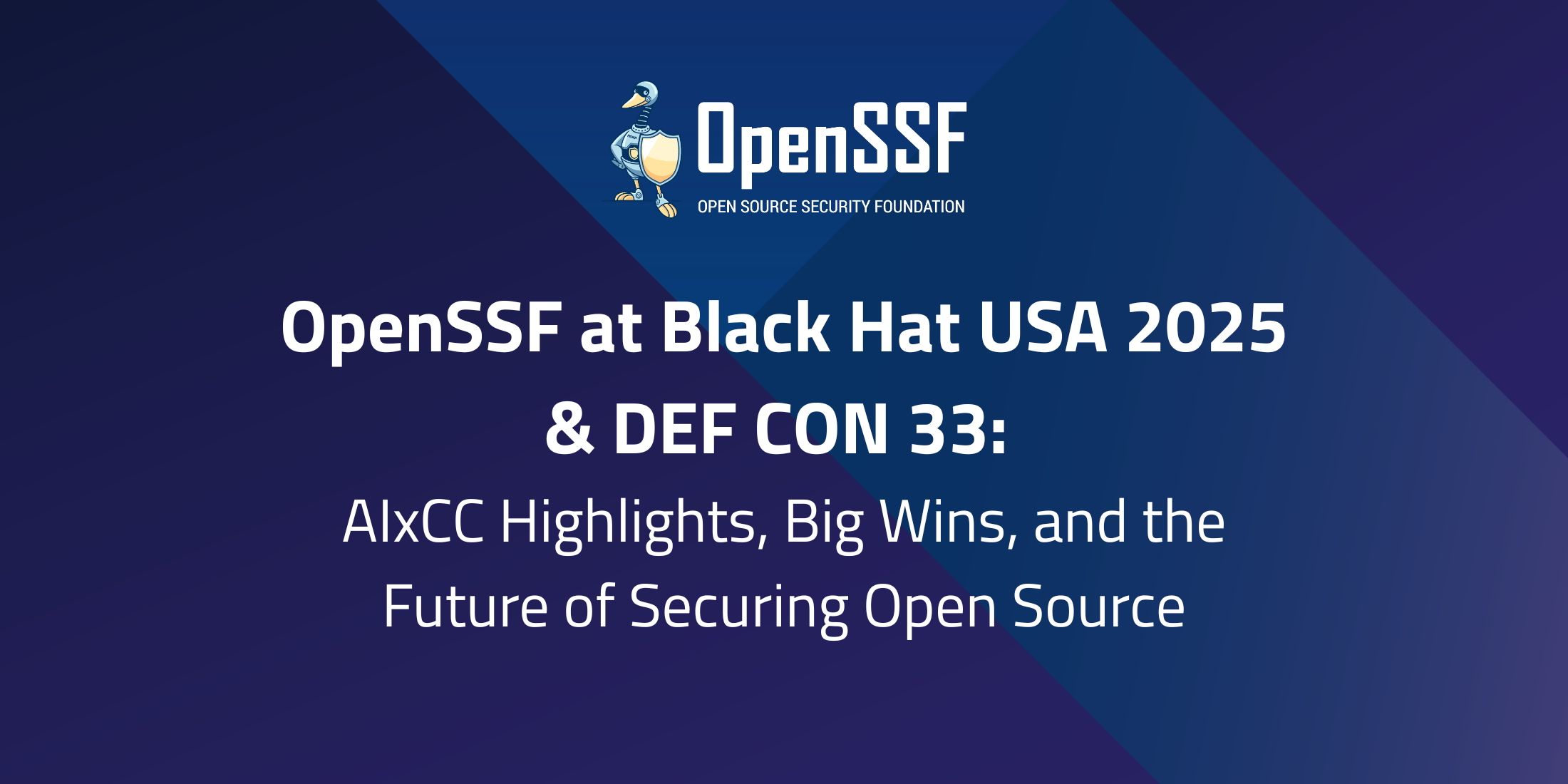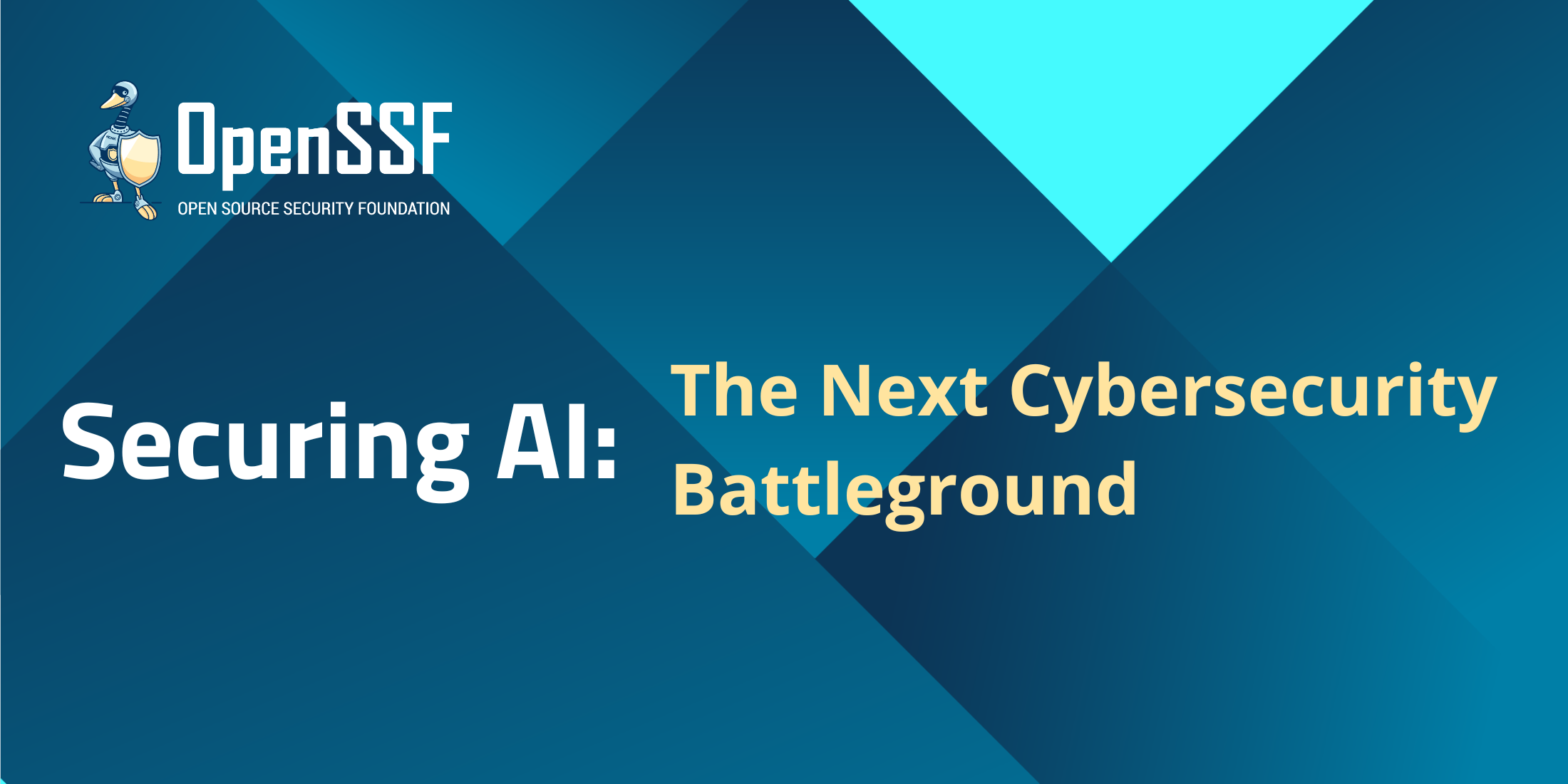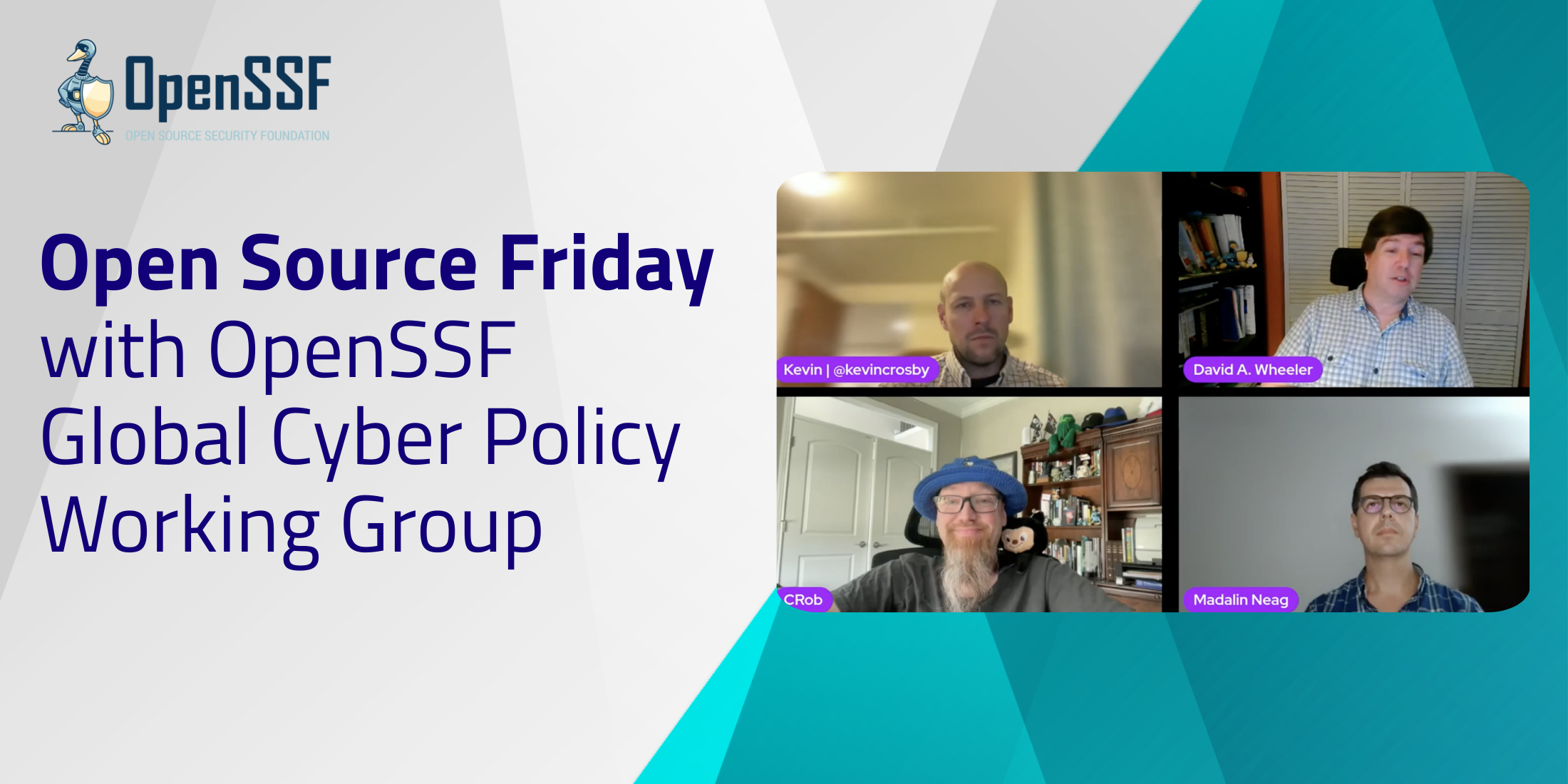


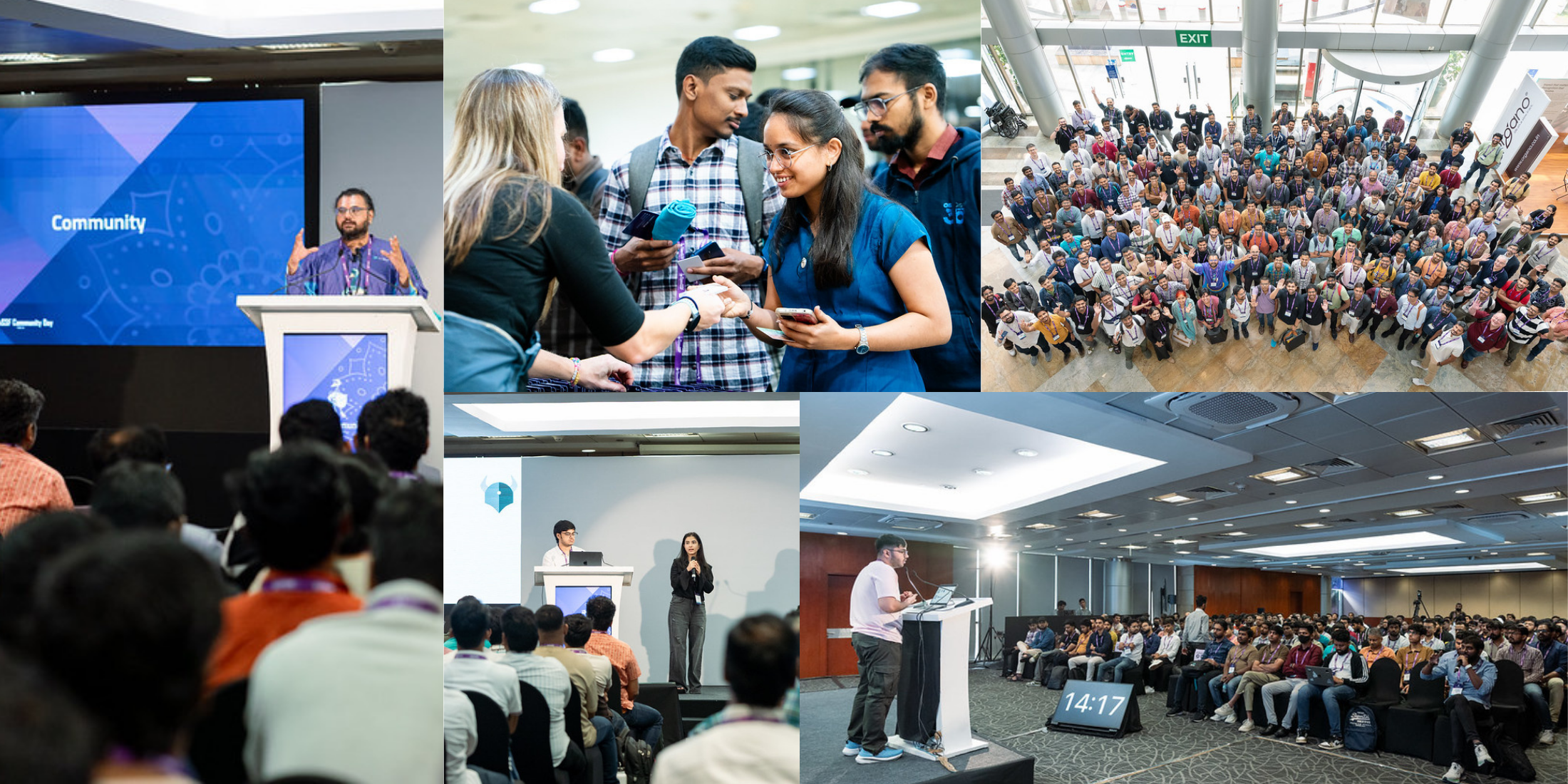
The quantum threat is real, and the clock is ticking. With government deadlines set for 2030, organizations have just five years to migrate their cryptographic infrastructure before quantum computers can break current RSA and elliptic curve systems.
In this episode of “What’s in the SOSS,” join host Yesenia as she sits down with David Hook (VP Software Engineering) and Tomas Gustavsson (Chief PKI Officer) from Keyfactor to break down post-quantum cryptography, from ELI5 explanations of quantum-safe algorithms to the critical importance of crypto agility and entropy. Learn why the financial sector and supply chain security are leading the charge, discover the hidden costs of migration planning, and find out why your organization needs to start inventory and testing now because once quantum computers arrive, it’s too late.
00:00 Introduction
00:22 Podcast Welcome
00:01 – 01:22: Introductions and Setting the Stage
01:23 – 03:22: Post-Quantum 101 – The Quantum Threat Explained
03:23 – 06:38: Government Deadlines and Industry Readiness
06:39 – 09:14: Bouncy Castle’s Quantum-Safe Journey
09:15 – 10:46: The Power of Open Source Collaboration
10:47 – 13:32: Industry Sectors Leading the Migration
13:33 – 16:33: Planning Challenges and Crypto Agility
16:34 – 22:01: The Randomness Problem – Why Entropy Matters
22:02 – 26:44: Getting Started – Practical Migration Advice
26:45 – 28:05: Supply Chain and SBOMs
28:06 – 30:48: Rapid Fire Round
30:49 – 31:40: Final Thoughts and Call to Action
Intro Music + Promo Clip (00:00)
Yesenia (00:21)
Hello and welcome to What’s in the SOSS, OpenSSF’s podcast where we talk to interesting people throughout the open source ecosystem, sharing their journey, experiences and wisdom. Soy Yesinia Yser, one of your hosts. And today we have a very special treat. I have David and Tomas from Keyfactory here to talk to us about post quantum. Ooh, this is a hot topic. It was one definitely that was mentioned a lot in RSA and upcoming conferences.
Tomas, David I’ll hand it over to you. I’ll hand it over to Tomas – introduce yourself.
Tomas Gustavsson (00:56)
Okay, I’m Thomas Gustavsson, Chief PKI Officer at Keyfactor. And I’ve been a PKI nerd and geek for working with that for 30 years now. I would call it applied cryptography. So as compared to David, I take what he does and builds PKI, a digital signature software with it.
David Hook (01:17)
And I’m David Hook. My official title is VP Software Engineering at KeyFactor, but primarily I’m responsible for the care and feeding of the bountycast of cryptography APIs which basically form the core of the cryptography that KeyFactor and other people’s products actually use.
Yesenia (01:35)
Very nice. And for those that aren’t aware, like myself, who is kind of new into the most post-quantum cryptology, could you explain like I’m five of what that is for our audience?
David Hook (01:46)
So one of the issues basically with the progress that’s been made in quantum computers is that there’s a particular algorithm called Shor’s algorithm which enables people to break conventional PKI systems built around RSA and Elliptic-Curve, which are the two most common algorithms being used today. The idea of the post-quantum cryptography effort is to develop and deploy algorithms which are not susceptible to attack from quantum computers before we actually have a quantum computer attacking us. Not that I’m expecting the first quantum computer to get out of a box, well, you know, sort of run rampaging around the street with a knife or anything like that. But the reality is that good people and bad people will actually get access to quantum technology at about the same time. And it’s really the bad people we’re trying to protect people from.
Tomas Gustavsson (02:39)
Exactly, and since more or less the whole world as we know it runs on RSA and EC, that’s what makes it urgent and what has caused governments around the world to set timelines for the migration to post quantum cryptography or quantum safe cryptographies. It’s also known as.
David Hook (03:03)
Yeah, I was just gonna say that that’s probably quantum safe is in some ways a better way of describing it. One of the issues that people have with the term post quantum is in the industry, a lot of people hear the word post and they think I can put this off until later. But yeah, the reality is that’s not possible because once there is a quantum computer that’s cryptographically relevant, it’s too late.
Yesenia (03:23)
So from what I’m hearing, sounds that post quantum cryptology is gaining urgency. And as we’re standardizing these milestones, including our government regulations, what are you seeing from your work with Bouncy Cancel, EJBCA, and SignServer? And of course, other important ecosystem players like our HSM vendors as they’re getting ready for these PQC deployments.
David Hook (03:49)
So I guess the first thing is, from the government point of view, the deadline is actually 2030, which is only about five years away. That certainly has got people’s attention. And that includes in Australia where I’m from. Now, what we’re seeing at the moment, of course, is that for a lot of people, they’re waiting for certified implementations. But we aren’t actually seeing people use pre-certified implementations in order to get some understanding of what the differences are between the quantum algorithms, the post quantum algorithms rather, and the original RSA PKI algorithms that we’ve been using before. One of the issues of course is that the post quantum algorithms require more resources. So the keys are generally bigger, the signature sizes are generally bigger, payloads are generally bigger as well. And also the mechanism for doing key transport in post quantum relies on a system called a KEM which is a key encapsulation mechanism. Key encapsulation mechanisms in usage are also slightly different to how RSA or Diffie-Hellman works, elliptic-curve Diffie-Hellman, which is also what we’re currently used to using. So it’s going to have to be some adaption in that too. What we’re seeing certainly at bouncer-caster levels, there’s a lot of people now starting to try new implementations of the protocols and everything they’re using in order to find out what the scalability effects are and also where there are these issues where they need to rephrase the way some processes are done just because the algorithms no longer support the things they used to support it.
Tomas Gustavsson (05:24)
I think it’s definitely encouraging that things have moved quite a lot, so of course the cryptographic community have worked on this for many, many years and we’ve now moved on from, you know, what can we do to when and how can we do it? So that’s very encouraging. There’s still a few final bits and pieces to be finished on the front of standardization and the certifications as David mentioned.
But things are, you know, dripping in one by one. For example, hardware security modules or HSM vendors are coming in one by one. for the actually the right kind of limited use cases today, selecting, you know, ready some vendors or open source projects, you can make things work today, which has really been kind of just in the last couple of months, a really big step forward for planning to being able to execute.
Yesenia (06:27)
Very interesting. And we’ll jump over to like bouncy castle. It’s from my experience within the open source world, it’s been a very long time that it’s been a trusted open source crypto library. How do you approach supporting post quantum algorithms while maintaining the trust and the interoperability? That’s a hard word for me.
David Hook (06:50)
Yeah, that’s all right. It’s not actually an easy operation to execute in real life either.
Yesenia (06:55)
Oh, so that works.
David Hook (06:57)
Yeah, so it works well. So with Bouncy Castle, what we able to do is we actually, our original set of post-quantum algorithms was based on round three of the NIST post-quantum competition. And we actually got funding from the Australian government to work with a number of Australian universities to add those implementations and also one of the universities was given funding to do formal validation on them as well. So one part of the process for us was, well guess there were three parts, one part was the implementation which was done in Java and C sharp and then in addition to that then we had somebody sit down and actually study the work that was done independently to make sure that we hadn’t introduced any errors that were obvious and to check for things like side channels and that way there were timing operation considerations that might have caused side channel leakage.
And then finally, of course, with the interoperability, we’ve been actively involved with organizations like the IETF and also the OpenSSL mission. And that’s allowed us to work with other open source projects and also other vendors to determine that our certificates, for example, and our private keys and all that have been encoded in a manner that actually allows them to be read and understood by the other vendors and other open source APIs. And on top of that, we’ve also been active participants in working with NIST on the ACVP stuff, which is for algorithm validation testing, to make sure the actual implementations themselves are producing the correct results. And that’s obviously something that we’ve worked with across the IETF and OpenSSL mission as well. So, you know part of actually generating a certificate of course is you’ve got to able to verify the signature on it. So that means you have to be able to understand the public key associated with it. That’s one checkbox and then the second one of course is the signature for example makes sense too.
Yesenia (08:52)
So, it sounds like there’s a lot of layers to this that have to be kind of checked off and gives it the foundation for this. Very nice.
Tomas Gustavsson (09:02)
I would say that what is so good to work in open source is that without collaboration we won’t have a chance to meet these tight deadlines that governments are setting up. So, and the great thing in open source community is that lot of things are transparent and easy to test.
Bouncy Castle is released open source, EGBC and Science Server are released open source and early. Not only us, of course, but other people can also start testing and grabbing OpenSSL or OQS from the Linux Foundation. You can test interoperability and verify it. And actually, you do find bugs in these early tests, which is why I think open source is the foundation to…being able to do this.
Yesenia (9:58)
Yeah, open source gives us that the nice foundation while we might have several years. I know with the migration itself, it’s going to take a while, especially trying to figure out how to, how is it going to be done? So just wanted to look into what remains of 2025 and of course, beyond. You know, we’re approaching a period where many organizations will need to start migrating, especially the critical infrastructure and our software supply chains. What do you anticipate will be the most important post quantum cryptographic milestone or shifts this year?
Tomas Gustavsson (10:32)
Definitely, we see a lot of interest from specific sectors. I said, supply chain security is a really big one because that was also, say, the first or definitely one of the first anticipated use cases for post-quantum cryptography because if you cannot secure the supply chain with over there updates and those kinds of things, then you won’t be in a good position to update or upgrade systems once a potential potent quantum computer is here. So everything about code signing, software supply chain is a huge topic. And it’s actually one of the ones where you will be able to do production usage or people are starting to plan and test production usage already or some actually have already gone there.
Then there’s industries like the finance industry, which is encouraging, I guess, for us all who have a bank that we work with, that they are very early on the ball as well to plan the huge complex system they are running and doing actually practical tests now and moving from a planning phase into an implementation phase.
And then there are more, I would say, forward looking things which are, you know, very long term like telecom are looking to the next generation like 6G where they are planning in post-quantum cryptography from the beginning. So there’s everything from, you know, right now to what’s happening in the coming years and what’s going to happen, you know, definitely past 2030. So a lot of all of these things are ongoing.
While there are still, of course, body of organizations and people out there who are completely ignorant, not in a bad way, right? They just haven’t reached, been reached by the news. There’s a lot of things in this industry, so you can’t keep track of everything.
Yesenia (12:43)
Right, they’re very unaware potentially of what’s to come or even if they’re impacted.
Tomas Gustavsson (12:49)
Yes.
David Hook (12:50)
So the issue you run into of course for something like this is that it costs money. That tends to slow people down a bit.
Tomas Gustavsson (12:58)
Yeah, that’s one thing when people or organizations start planning, they fall into these non obvious things like from a developer when you just develop it and then someone integrates it and it’s going to work. But large organization, they have to look into things like hardware depreciation periods, right? When if they want to be ready by 2035 or 2030, they have to plan backwards to see when can we earliest start replacing hardware if it’s routers or VPN and these kind of things. And when do we need to procure new software or start updating and planning our updates because all these things are typically multi-year cycles in larger organizations. And that’s why things like the financial industry is trying to start to plan early. And of course, we as suppliers are kind of on the bottom of the food chain. We have to be ready early.
David Hook (14:02)
One of the, actually, I guess there’s a couple of runs across where the money’s got to get spent too. So the first one really is that people need to properly understand what they’re doing. It’s surprising how many companies don’t actually understand what algorithms or certificates that got deployed. So people actually need to have their inventory in place.
The second thing, of course, that we’ll probably talk about a couple of times is just the issue of crypto agility. It’s been a bit of a convention in the industry to bolt security on at the last minute. And we generally get away with it. Although we don’t necessarily produce the best results. But the difference between what we’ve seen in the past and now where people really need to be designing crypto agile implementations, meaning that they can replace key side certificates, keys, even whole algorithms in their implementations, is that you really have to design a system to deal with that upfront. And in the same way as we have disaster recovery testing, it’s actually the kind of thing that needs to become part of your development testing as well. Because as I was on a panel recently for NIST and as one of the people on that panel pointed out, it’s very easy to design something which is crypto agile in theory. But it’s like most things, unless you actually try and make sure that it really does work, that’s only when you actually find out that you’ve actually accidentally introduced a dependency on some old algorithm or something that you’re trying to get rid of.
So there’s those considerations as well that need to be made.
Yesenia (15:43)
Seems like a lot to be considered, especially with the migration and just the bountiful information on post quantum as well. I want to shift gears just a little bit and just throw in some randomness and talk about the importance of randomness. It’s just a topic that with many companies promoting things like QRNG and research just revealing breakable encryption keys, mostly due to weak entropy – Can you talk about why entropy can be hard to understand and what failures it depends on?
David Hook (16:20)
Yeah, entropy is great. You talk to any physicist and usually what you’ll find out is they’re spending all their time trying to get rid of the noise in their measurement systems. And of course, what they’re talking about there is low entropy. What we want, of course, in cryptography, because we’re computer scientists, we do everything backwards, we actually are looking for high entropy. So high entropy really gives you good quality keys.
That is to say that you can’t predict what actual numbers or bit strings will actually appear in your keys. And if you can’t predict them, then there’s a pretty good chance nobody else can. That’s the first thing. Of course, one slight difference, again, because we’re computer scientists and we like to make things a bit more difficult than they need to be sometimes, we actually in cryptography talk about conditioned entropy, which is what’s defined in a recent NIST standard, which has got the rather catchy name of SPA 890B.
Yesenia (17:24)
Got you.
David Hook (17:25)
And that’s become sort of the, I guess, the current standard for how to do it properly, and that’s been adopted across the globe by a number of countries. Now…one of the interesting times of this, of course, is the quantum effects actually are very good for generating lots of entropy. So we’re now seeing people actually producing quantum random number generators. And the interesting thing about those is that they can just provide virtually an infinite stream of entropy at high speed. This is good because the other thing that we usually do to get entropy is we rely on what’s called opportunistic entropy.
So on a server, for example, you go, know, how fast is my disk going? How, where am I getting blocks from? You know, what’s the operating system doing? How long is it taking the user to type something in? Is there network latency for this or that? Or, you know, all these sort of things that all these operating system functions that are taking place. How long does it take me to scan a large amount of memory? These all contribute to, you know, bits of randomness really because they’re characteristic of that system and that system only.
The issue of course that we’ve got is that nowadays a lot of systems are on what you call virtual architectures. So the actual machine that you’re running on is a virtual machine. And so it doesn’t necessarily have all those hardware characteristics that it can get access to. And then there’s the other problem, know, which is like when we do stuff fast now, we use high speed ram disks, gigabit ethernet, you all this sort of stuff. And suddenly a lot of things that used to introduce random random-ish sort of delays are no longer doing that because the hardware is running so fast and so hot, which is great for user response times, but for generating cryptographic keys, maybe not so nice. And this is really where the QRNGs, I think, at the moment are coming into their own because they provide an independent way of actually producing entropy that the opportunistic schemes that we previously used are suddenly becoming ineffective for.
Tomas Gustavsson (19:34)
I might add in there that the history is kind of littered with severe breakages due to entropy failures. We have everything from Debian wikis, which we still suffer from even though it was ages ago. We had the ROCA wikis which led to replacement of like a hundred million smart cards a bunch of years ago and there’s still research, you know, recent research that shows that off on the internet there’s breakable RSA keys in certificates which are active due to typically being generated maybe on a constrained device during the boot up phase where it hadn’t gathered enough in entropy yet. So it becomes predictable. So there’s a lot of bad history around this and it’s not obvious how to make it correctly. Typically you rely on the platform to give it to you.
But then, when the platform isn’t reliable enough, it fails.
David Hook (20:37)
And the interesting thing about that is that, know, the RSA keys that Thomas was talking about, you don’t need a quantum computer to break them. I mean, it’d be nice to have one to break them with because then you could claim you had a quantum computer. But the reality is you don’t need to wait for a quantum computer because of the poor choices that have been made around entropy. The keys are breakable now – using conventional computers. So yeah, entropy is important.
Yesenia (21:04)
The TLDR entropy is important. And we are heading towards that time of this migration and stuff. As we had mentioned earlier, a lot of companies, they just might not be aware. They might not feel like they fall under this migration and these standards that are coming along. So I just wanted to see if y’all can share some practical advice – for organizations that are beginning their post-quantum journey, what are one or two steps that you’d recommend that they take now?
Tomas Gustavsson (21:35)
I think, yep, some things we touched on already, like this inventory. So in order to migrate away from future vulnerable cryptography, you have to know what you have and where you have it today. And there’s a bunch of ways to do that. And it’s typically thought as kind of the first step in order to allow you to do some planning for your migration. I mean, you can do technical testing as well. We’re computer geeks here, so we like the testing.
While you’re doing [unintelligible] and planning, can test the obvious things that you know already that you know you’ll have to migrate. So there’s a bunch of things you can do in parallel. And then I think I mentioned is that you have to think backwards to realize that even though 2030 or 2035 doesn’t sound like tomorrow, it’s in a cryptographic migration scenario, or software and hardware replacement cycle it is virtually tomorrow. while they were saying that the best time to start was 10 years ago, but the second best time to start is now.
Yesenia (22:49)
I mean, it’s four and half years away.
David Hook (22:51)
Yeah, and we’ve still got people trying to get off SHA-1. It’s just those days are gone. The other thing too, of course, is yeah, people need to spend a bit of time looking at this issue of crypto agility because the algorithms that are coming down the pipe at the moment, while they’ve been quite well studied and well researched, it’s not necessarily going to be the case that they’re actually going to stay the algorithms that we want to use. And that might be because it could show up that there’s some issues with them that weren’t anticipated and parameter sizes might need to be changed to make them more secure. Or there’s a lot of ongoing research in the area of post-quantum algorithms and it may turn out that there are algorithms that are a lot more efficient to offer smaller key sizes or smaller signature sizes, which certain applications are one to migrate to quite quickly.
So, know, if you can imagine, you know, having a conversation with your boss where, you know, suddenly there’s some algorithm that’s going to make you twice as productive and you have to explain to him that you’ve actually hard coded the algorithm that you’re using. I don’t think a conversation like that’s going to go very well. So flexibility is required, but as I said, the flexibility needs to be designed into your system. in the same way as you have disaster recovery testing, it needs to be tested before deployment. can actually change the algorithms we need to.
Tomas Gustavsson (24:14)
Yeah, we’ve actually, you often say that since you’re doing this work on migration now, you know, it’s an opportunity to look at crypto agility. If you’re changing something, make it crypto agile. And the same thing, you know, classic advice is if you rely on vendors, be it commercial or open source, ask them about their preparedness for quantum readiness when they’re going to be ready. So you have to challenge everything, both us, you know, in the in our community, right? There are among different open source projects, nothing is start to build and build any new things which are non crypto agile or not prepared for quantum safe algorithms and for old stuff to actually plan. It’s going to take some man hours to update it to be quantum safe in many cases, in most all cases.
David Hook (25:10)
Yeah, don’t be afraid to ask people that are selling your stuff what their agility story is and what their quantum safe story is. I think all of us need to do that and respond to it.
Yesenia (25:21)
Yes, ask and respond. What would be areas or organizations that folks, let’s just say it when they’re aware, they could go ahead and ask if they’re getting started.
David Hook (25:30)
So probably internally, it’s obviously your IT people. I would start by asking them, because they’re the people on the call face. And then, yeah, as Thomas said before, it’s the vendors that you’re working with, because this is one of the things about the whole supply chain – most of us, even in IT, are not using stuff that’s all in-house, we’ve usually got other people somewhere in our supply chain responsible for the systems that we’re making use of internally. And so, you know, people need to be asking everyone. And likewise, your suppliers need to be following the same basic principle, which is making sure that in terms of how their supply chains work, again, there’s this coverage of, you know, what is the quantum safe story and, know, how these systems that have been given to them, all these APIs or products that have been given, how they crypto agile, what is required to change things that need to be changed.
Tomas Gustavsson (26:30)
Now this is a great use case for your SBOMs and CBOMs.
David Hook (26:34)
Exactly, their time has arrived.
Yesenia (26:36)
There you go. It has arrived. Time for the boms. For those unaware, I just learned Cbom because I work with AISboms and Sboms. I just learned Cboms were cryptographic boms. So in case someone was like, what is a Cbom now? There you go. We dropped the bomb on you.
Let’s move over now to our rapid fire part of the interview. I’ll pose a few questions and it’s going to be whoever answers them first. Or if you both answer them the same time, we’ll figure that out.
But our first question, Vim or Emacs?
David Hook (27:06)
Vim or Emacs? Vim! Good answer. I didn’t even know that was a question. I thought it was a joke. I’m sorry, I’m a very old school.
Tomas Gustavsson (27:19)
I was told totally Emacs 20 years ago.
Yesenia (27:22)
You know, we just got to start the first one of throwing you off a little bit. Make sure you’re awake, make sure I’m awake. I know we’re on very different time zones, but…
David Hook (27:29)
I was using VI in 1980. And I’ve never looked back.
Yesenia (27:33)
Our next one is Marvel or DC?
David Hook (27:36)
Yeah, what superheroes do prefer? Oh yeah. I’m really more a Godzilla person. know, Mothra, Station Universe for Love, that kind of thing. Yeah. I don’t know if Marvel or DC has really captured that for me yet.
Tomas Gustavsson (27:56)
Yeah, I remember Zelda, was. There was the hero as well. That was in the early 90s, maybe 80s even.
David Hook (28:05)
Yeah. There you go. Sorry.
Yesenia (28:07)
There you go. Not it’s OK. You got to answer. Sweet or sour?
Tomas Gustavsson (28:10)
Sour.
David Hook (28:11)
Yeah, I’d go sour.
Yesenia (28:12)
Sour. Favorite adult beverage?
Tomas Gustavsson (28:18)
Alcohol.
David Hook (28:22)
Probably malt whiskey, if I was going to be specific. But I have been known to act more broadly, as Thomas has indicated, so probably a more neutral answer.
Yesenia (28:35)
Thomas is like, skip the flavor, just throw in the alcohol.
Tomas Gustavsson (28:40)
Well, I think it has to be good, but it usually involves alcohol in some form or the other.
Yesenia (28:47)
Love it. Last one. Lord of the Rings or Game of Thrones?
David Hook (28:52)
Lord of the Rings. I have absolutely no doubt.
Tomas Gustavsson (28:55)
I have to agree on that one.
Yesenia (28:57)
There you go, there you have it folks, another rapid fire. Gentlemen, any last minute advice or thoughts that you want to leave with the audience?
David Hook (29:05)
Start now.
Tomas Gustavsson (29:07)
And for us, if you’re a computer geek, this is fun. So don’t miss out on the chance to have some fun.
David Hook (29:16)
Yeah, we pride ourselves on our ability to solve problems. So now is a good time to shine.
Yesenia (29:22)
There you have it. It’s time to start now and start with the fun. Thank you both so much for your time today, your impact and contribution to our communities and those in our community helping drive these efforts forward. I look forward to seeing your efforts in 2025. Thank you.
David Hook & Tomas Gustavsson (29:41)
Thank you. Thank you.
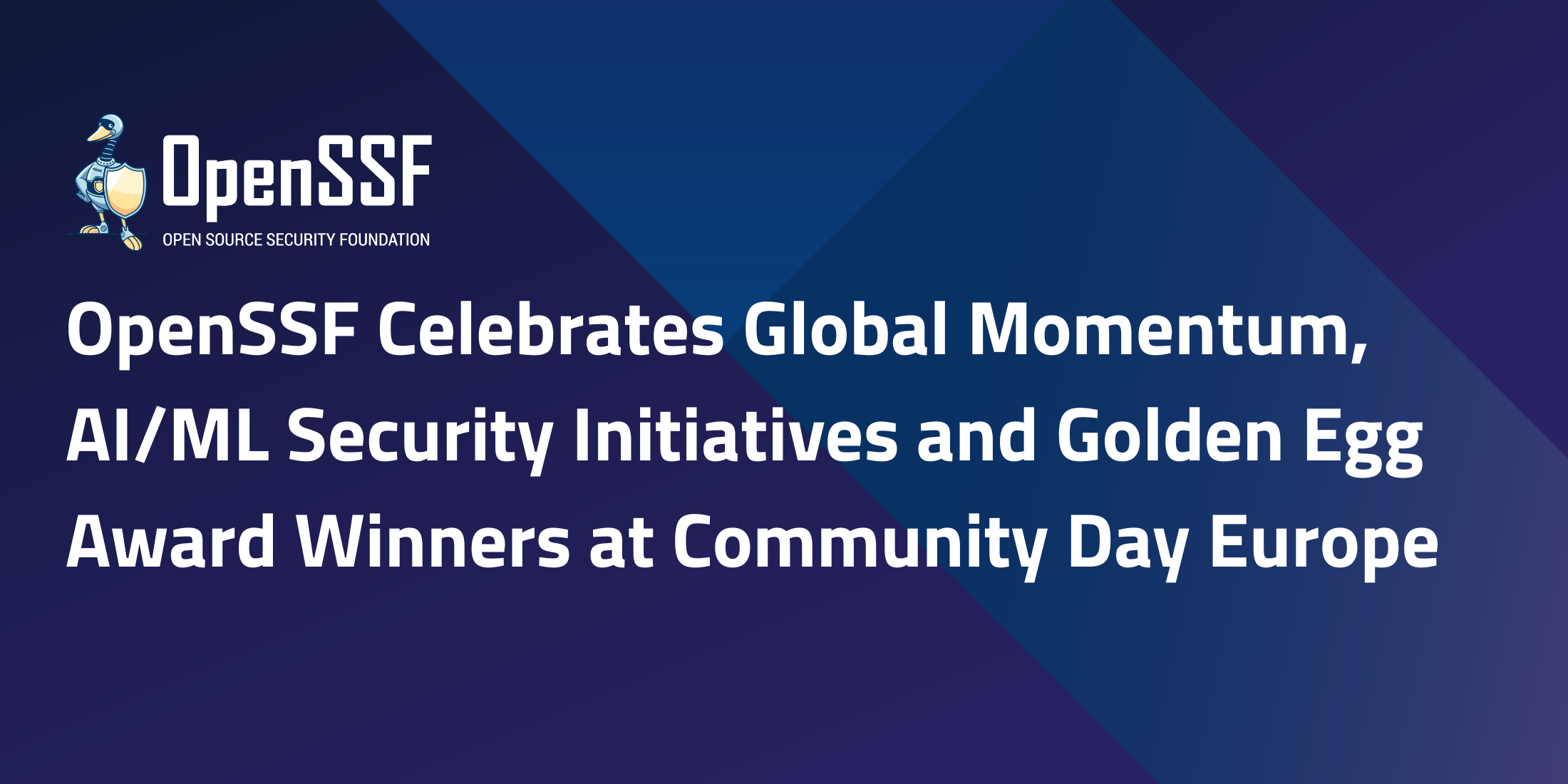
Foundation honors community achievements and strategic efforts to secure ML pipeline during community event in Amsterdam
AMSTERDAM – OpenSSF Community Day Europe – August 28, 2025 – The Open Source Security Foundation (OpenSSF), a cross-industry initiative of the Linux Foundation that focuses on sustainably securing open source software (OSS), presents the Golden Egg Award during OpenSSF Community Day Europe and celebrates notable momentum across the security industry. The Foundation’s milestones include achievements in AI/ML security, policy education, and global community engagement.
OpenSSF continues to shine a light on those who go above and beyond in our community with the Golden Egg Awards. The Golden Egg symbolizes gratitude for recipients’ selfless dedication to securing open source projects through community engagement, engineering, innovation, and thoughtful leadership. This year, we celebrate:
OpenSSF is supported by more than 118 member organizations and 1,519 technical contributors across OpenSSF projects, serving as a vendor-neutral partner to affiliated open source foundations and projects. As securing the global technology infrastructure continues to get more complex, OpenSSF will remain a trusted home to further the reliability, security, and universal trust of open source software.
Over the past quarter, OpenSSF has made several key achievements in its mission to sustainably secure open source software, including:
“Securing the AI and ML landscape requires a coordinated approach across the entire pipeline,” said Steve Fernandez, General Manager at OpenSSF. “Through our MLSecOps initiatives with OpenSSF members and policy education with our communities, we’re giving practitioners and their organizations actionable guidance to identify vulnerabilities, understand their role in the global regulatory ecosystem, and build a tapestry of trust from data to deployment.”
OpenSSF continues to expand its influence on the international stage. OpenSSF Community Days drew record attendance globally, including standing-room-only participation in India, strong engagement in Japan, and sustained presence in North America.
“As AI and ML adoption grows, so do the security risks. Visualizing Secure MLOps (MLSecOps): A Practical Guide for Building Robust AI/ML Pipeline Security is a practical guide that bridges the gap between ML innovation and security using open-source DevOps tools. It’s a valuable resource for anyone building and securing AI/ML pipelines.” Sarah Evans, Distinguished Engineer, Dell Technologies
“The whitepaper distills our collective expertise into a pragmatic roadmap, pairing open source controls with ML-security threats. Collaborating through the AI/ML Security WG proved that open, vendor-neutral teamwork can significantly accelerate the adoption of secure AI systems.” Andrey Shorov, Senior Security Technology Specialist at Product Security, Ericsson
“The Cybersecurity Skills Framework is more than a checklist — it’s a practical roadmap for embedding security into every layer of enterprise readiness, open source development, and workforce culture across international borders. By aligning skills with real-world global threats, it empowers teams worldwide to build secure software from the start.” Jamie Thomas, Chief Client Innovation Officer and the Enterprise Security Executive, IBM
“Open source is global by design, and so are the challenges we face with new regulations like the EU Cyber Resilience Act,” said Christopher “CRob” Robinson, Chief Security Architect, OpenSSF. “The Global Cyber Policy Working Group helps policymakers understand how open source is built and supports maintainers and manufacturers as they prepare for compliance.”
“The OpenSSF’s brief guide to the Cyber Resilience Act is a critical resource for the open source community, helping developers and contributors understand how the new EU law applies to their projects. It clarifies legal obligations and provides a roadmap for proactively enhancing their code’s security.” Dave Russo, Senior Principal Program Manager, Red Hat Product Security
New and existing OpenSSF members are gathering this week in Amsterdam at the annual OpenSSF Community Day Europe.
OpenSSF will continue its engagement across Europe this fall with participation in the Linux Foundation Europe Member Summit (October 28) and the Linux Foundation Europe Roadshow (October 29), both in Ghent, Belgium. At the Roadshow, OpenSSF will sponsor and host the CRA in Practice: Secure Maintenance track, building on last year’s standing-room-only CRA workshop. On October 30, OpenSSF will co-host the European Open Source Security Forum with CEPS in Brussels, bringing together open source leaders, European policymakers, and security experts to collaborate on the future of open source security policy. A landing page for this event will be available soon, check the OpenSSF events calendar for updates and registration details.
The Open Source Security Foundation (OpenSSF) is a cross-industry organization at the Linux Foundation that brings together the industry’s most important open source security initiatives and the individuals and companies that support them. The OpenSSF is committed to collaboration and working both upstream and with existing communities to advance open source security for all. For more information, please visit us at openssf.org.
Media Contact
Grace Lucier
The Linux Foundation
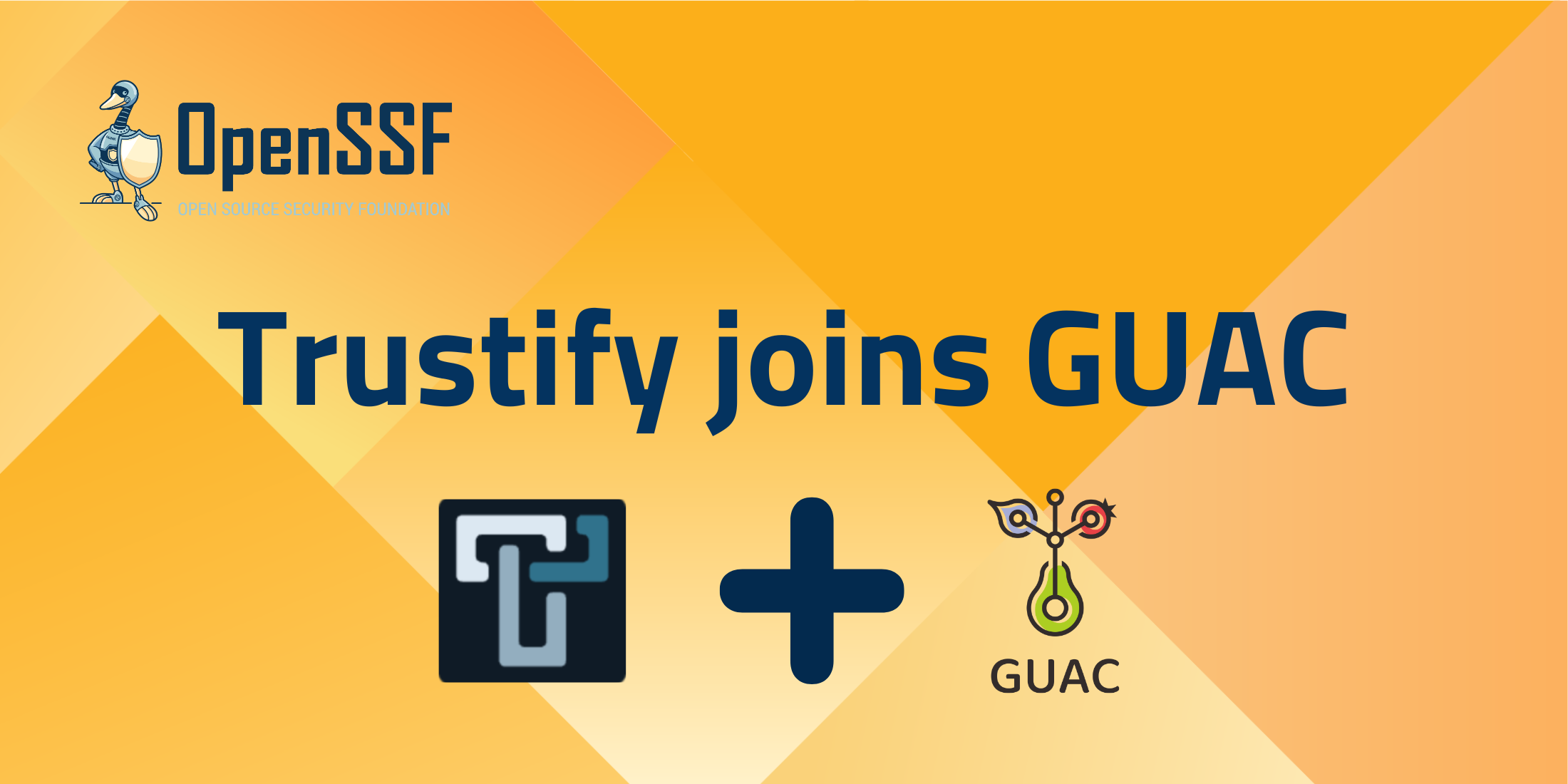
By Ben Cotton and Dejan Bosanac
The superpower of open source is multiple people working together on a common goal. That works for projects, too. GUAC and Trustify are two projects bringing visibility to the software supply chain. Today, they’re combining under the GUAC umbrella. With Red Hat’s contribution of Trustify to the GUAC project, the two combine to create a unified effort to address the challenges of consuming, processing, and utilizing supply chain security metadata at scale.
The Graph for Understanding Artifact Composition (GUAC) project was created to bring understanding to software supply chains. GUAC ingests software bills of materials (SBOMs) and enriches them with additional data to create a queryable graph of the software supply chain. Trustify also ingests and manages SBOMs, with a focus on security and compliance. With so much overlap, it makes sense to combine our efforts.
The grand vision for this evolved community is to become the central hub within OpenSSF for initiatives focused on building and using supply chain knowledge graphs. This includes: defining & promoting common standards, data models, & ontologies; developing shared infrastructure & libraries; improving the overall tooling ecosystem; fostering collaboration & knowledge sharing; and providing a clear & welcoming community for contributors.
Right now, we’re working on the basic logistics: migrating repositories, updating websites, merging documentation. We have created a new GUAC Steering Committee that oversees two core projects: Graph for Understanding Artifact Composition (GUAC) and Trustify, and subprojects like sw-id-core and GUAC Visualizer. These projects have their own maintainers, but we expect to see a lot of cross-collaboration as everyone gets settled in.
If you’d like to learn more, join Ben Cotton and Dejan Bosanac at OpenSSF Community Day Europe for their talk on Thursday 28 August. If you can’t make it to Amsterdam, the community page has all of the ways you can engage with our community.
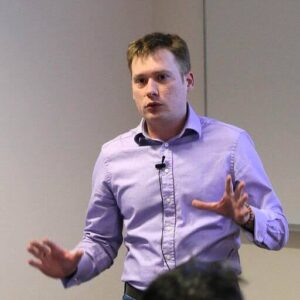 Ben Cotton is the open source community lead at Kusari, where he contributes to GUAC and leads the OSPS Baseline SIG. He has over a decade of leadership experience in Fedora and other open source communities. His career has taken him through the public and private sector in roles that include desktop support, high-performance computing administration, marketing, and program management. Ben is the author of Program Management for Open Source Projects and has contributed to the book Human at a Distance and to articles in The Next Platform, Opensource.com, Scientific Computing, and more.
Ben Cotton is the open source community lead at Kusari, where he contributes to GUAC and leads the OSPS Baseline SIG. He has over a decade of leadership experience in Fedora and other open source communities. His career has taken him through the public and private sector in roles that include desktop support, high-performance computing administration, marketing, and program management. Ben is the author of Program Management for Open Source Projects and has contributed to the book Human at a Distance and to articles in The Next Platform, Opensource.com, Scientific Computing, and more.
 Dejan Bosanac is a software engineer at Red Hat with an interest in open source and integrating systems. Over the years he’s been involved in various open source communities tackling problems like: Software supply chain security, IoT cloud platforms and Edge computing and Enterprise messaging.
Dejan Bosanac is a software engineer at Red Hat with an interest in open source and integrating systems. Over the years he’s been involved in various open source communities tackling problems like: Software supply chain security, IoT cloud platforms and Edge computing and Enterprise messaging.
In this episode of “What’s in the SOSS,” we welcome back Sarah Evans, Distinguished Engineer at Dell Technologies and a key figure in the OpenSSF’s AI/ML Security working group. Sarah discusses the critical work being done to extend secure software development practices to the rapidly evolving field of AI. She dives into the AI Model Signing project, the groundbreaking MLOps whitepaper developed in partnership with Ericsson, and the crucial work of identifying and addressing new personas in AI/ML operations. Tune in to learn how OpenSSF is shaping the future of AI security and what challenges and opportunities lie ahead.
0:00 Welcome and Introduction to Sarah Evans
0:48 Sarah Evans: Role at Dell Technologies and Involvement in OpenSSF
1:38 The OpenSSF AI/ML Working Group: Genesis and Goals
3:37 Deep Dive: The AI Model Signing Project with Sigstore
4:28 AI Model Signing: Benefits for Developers
5:20 Transition to the MLSeCOps White Paper
5:49 The Mission of the MLSecOps White Paper: Addressing Industry Gaps
7:00 Collaboration with Ericsson on the MLEC Ops White Paper
8:15 Identifying and Addressing New Personas in AI/ML Ops
10:04 The Power of Open Source in Extending Previous Work
10:15 Future Directions for OpenSSF’s AI/ML Strategy
11:21 OpenSSF’s Broader AI Security Focus
12:08 Sneak Peek: New Companion Video Podcast on AI Security
12:31 Sarah’s Personal Focus: The Year of the Agents (2025)
13:00 Security Concerns: Bringing Together Data Models and Code in AI Applications
14:00 Conclusion and Thanks
0:00 Intro Music & Promo Clip: We have so much experience in applying secure software development to CI/CD and software, we can extend what we’ve learned to the data teams and to those AI/ML engineering teams because ultimately, I don’t think that we want a world where we have to do separate security governance across AI apps.
CRob:
0:20: Welcome, welcome, welcome to What’s in the SOSS, where we talk to interesting characters from around the open source security ecosystem, maintainers, engineers, thought leaders, contributors, and I just get to talk to a lot of really great people along the way. Today we have a friend of the show we’ve already had discussions with her in the past. I am so pleased and proud to introduce my friend Sarah Evans. Sarah, for our audience, could you maybe just tell them, remind them, you know who you are and what do you do and what you’ve been up to since our last talk.
Sarah Evans:
0:57: Well, thanks for having me here. I’m a distinguished engineer at Dell Technologies, and I have two roles. One is I do security applied research for my company looking at the future of security in our products and what innovation that we need to explore to improve the security by design. My second role is to activate my company to participate in OpenSSF, which I have thoroughly enjoyed getting to work with friends such as yourselves. I am very active and engaged in the AI/ML working group and trying to advocate for AI security.
CRob:
1:37: Awesome, yeah. And that actually brings us to our talk today. Our friends within your working group, the AI/ML working group, you’ve had a flurry of activity lately. I would love to talk about, you know, first off, let’s give the audience some context. Let’s talk about what is this group, and what’s kind of your some of your goals.
Sarah Evans:
1:58: Yeah, so the AI/ML working group really kind of came into fruition about a year and a half ago, I think, and we needed a space where we could talk about how the work that software developers were doing would change as they started to build applications that had AI in it. So were there things that we were doing today that could apply to the way the technology was changing?
One of the initial concerns is software secure software development we know a lot about that, but we may know less about AI. So is is a home for AI and OpenSSF appropriate? Should we be deeply partnering with some of the other foundations that are creating these data sets, creating the tools and models, and so we started the working group where our commitment to the tech was that we would deeply engage with the other groups around the ecosystem which we have. Done, but then we’ve also been looking for where are those places that are uniquely in the OpenSSF wheelhouse or swim lane of expertise on extending software security to AI applications, and I think that we’ve done a really good job of kind of exploring some of those places.
One of them has been with a white paper that we are partnering with another member in Ericsson to deliver, and that is something that we’re very proud of sharing with the community.
CRob:
3:28: Great, I’m really excited to talk about these projects because I for one welcome our robot overlords. Let’s first off start off – we had a big, you guys had a big announcement that really seems to have captured the imagination of the community. Let’s talk about the AI model signing project.
Sarah Evans:
3:47: Yes, so the model signing project, we worked that as a special interest group within our working group. We were approached by, some folks who are working in partnership with SigS store and. The idea was that if you can use Sigstore to sign code, could you extend Sigstore to sign a model and fill and close a gap that didn’t exist in the industry, and as you know, we were able to do that. There was a team of people that came together in the open source fashion to extend a tool to a new use case. And that’s just been very exciting to watch that evolve.
CRob
4:27: That’s awesome.
Sarah Evans:
4:28: So thinking about it from the developer perspective, I’m a developer working in the AI, how does this help me?
CRob
4:36: Right?
Sarah Evans:
4:36: So right now if you are pulling a model off of hugging face as an example, you don’t have any cryptographic digital signature on that model that that verifies it. The way you would with code. And so if that model has been signed with the SIS store components, then now you have the information that you would use to validate code. You can also follow some of those similar processes to validate a signed model.
CRob
5:07: Pretty cool.
Sara Evans
5:08: Yeah, it’s a really good use case for the supply chain security. And extending what we know about software to models and data that are part of our AI applications.
CRob
5:20: This seems to be kind of a theme for you taking classic ASA and applying it to the newer technologies. So let’s move on to the white paper. You and I have collaborated around some graphics for this, and then you’ve got a couple of folks you’re working with on the white paper. You’re shepherding through review and publication, and you should be able to read that now. So you know why do you think this talk, let’s talk about the white paper, you know, what’s it about? What’s it kind of the mission of it?
Sarah Evans
5:49: When the AI/ML working group first kicked off, I knew that we had seen this evolution of developing on open source software and processes called DevOps and then those evolved to DevSecOps over time. And so with the disruptive technology around AI/ML, I wanted to know what were the processes that a data scientist or an AI/ML engineer used and did they have the security governance they needed in their operational processes.
So I started to look at what is DataOps, what is MLops, what is LLMOps, like all the alphabet soup of ops all the ops. And I couldn’t find a lot of information online. And so I thought this is an industry gap that we have and we have so much experience in applying secure software development to CICD and software.
We can extend what we’ve learned to the data teams and to those AI/ML engineering teams because ultimately I don’t think that we want a world where we have to do separate security governance across AI apps that have these different operational pieces in them.
I was doing my research and I found a white paper by Ericsson on MLSecOps in the telco environment. Ericsson being a fellow member of OpenSSF, I, you know, worked through their OSPO and through some of the connections that we have in OpenSSF said, Hey, can you introduce me to those authors? I would love to see if we could up level that as a general resource to the community as an OpenSSF whitepaper. We were able to do that. They have been a fantastic partner in collaboration.
And so now we have for the industry an MLSecOps white paper reference architecture and some documentation about extending in two ways:
CRob
8:14: That’s really awesome. Congrats on that. Another area that we’ve collaborated on, the OpenSSF has a series of personas. We have 5 personas and that kind of organizes and drives our work. We have a Maintainer developer persona and OSPO persona and executive persona and so forth but one thing that you came to me that you realized early on as you were developing this white paper is there was a, there’s some gaps. Could you maybe talk about those gaps and what we’ve done to address them?
Sarah Evans
8:46: Yeah, where we found the gaps were in sub-personas so those main core personas that OpenSSF has been working with were, were just solid. We still have developers and maintainers, we still have security engineers…we still have folks working in our open source program offices, but the sub-personas were very software developer focused.
They really didn’t include some of the personas that we were seeing related to curating data sets, putting together end to end architectures, or, kind of putting together a pipeline for machine learning as a data engineer. So we, I worked based off of the language in that original Ericsson white paper that we have up leveled to an OSSF white paper to take those personas that work in that MLE op space and add them as sub personas within OpenSSF. So now we can all start to have the same language and understanding around who might be developing software applications, new members of our community that we want to be inclusive of and have language to understand how to reach them and partner with them.
CRob
10:04: I just love the power of open source where you find some previous work, you get value out of it, and then you expand it. Thank you so much for contributing that back.
Sarah Evans
10:13: Absolutely.
CRob
10:15: And where are you going from here? Where are the next steps around the white paper?
Sarah
10:19: I think we want to spend some time championing and then you know, meeting with our community we’ve discovered that potentially OpenSSF would like to have a broader AI/ML strategy or program and so really understanding how those strategic efforts will evolve and making sure that we can plug into those and provide resources that that strategically move OpenSSF forward into this new space those could include an MLSecOps document or maybe even a converged enterprise view of multiple ops but we’re also open to just looking at. Maybe some of the other areas that have been identified such as dealing with potentially AI slop or other concerns related to AI/ML.
I think there’s a really great opportunity for OpenSSF to look through our stack of tools and processes and understand how we can extend those to AI/ML use cases and applications.
I know that there is an opportunity to have a strategic program around AI and securing AI applications, and I’m really excited and looking forward to what the future of OpenSSF tools, processes, procedures, best practices look like so we can really support our software developers as they’re developing secure AI applications.
CRob
11:12: That’s awesome. I’m really looking forward to collaborating with you all and kind of championing and showcasing the work going forward. So thank you very much.
Let’s move along. We will be creating a new companion video podcast focused on this amazing community of AI security experts we have here within OpenSSF and within the broader community, and we’ll be talking about AI security news and topics. And I’m going to give this, take this opportunity to give the listeners a sneak peek of what we might be discussing very soon. So from your perspective, Sarah, you know, beyond these cool projects that you’re working on, what are you personally keeping an eye on in this fast moving AI space?
Sarah Evans
12:42: Well, I’ll tell you, 2025 is the year of the agents, and understanding the accelerated rate that agents that impact they will have on AI applications has been something I’ve been spending a lot of time on.
CRob
12:56: Pretty cool. I’m looking forward to learning more with everyone together. And from your perspective again, what’s keeping you up at night in regards to this crazy AI/ML, LLM, GenAI agentic, blah blah blah, machine space? What what are you concerned about from a security perspective?
Sarah Evans
I think for me from a security perspective bringing together data models and deploying it with code really puts an end to end AI application. It puts a lot of pressure on teams that may not have had to tightly work together before to begin to tightly work together. And so that’s why the personas and the and the converged operations and thinking about how do we apply what security we know to new areas is so important because we don’t have a moment to lose.
There’s such accelerated excitement around leveraging AI and leveraging agents that’s going to be very important for us to have a common way to talk to each other and to begin to solve problems and challenges so that we can innovate with this technology.
CRob
13:59: Excellent. Well, Sarah, I really appreciate your time come and talk to us about these amazing going on and kind of giving us a sneak peek into the future. And you know, I, I want to thank you again from behalf of the foundation, our community, and you know all the maintainers and enterprises that we serve. So thanks for showing up today.
Sarah Evans
14:17: Yeah, thanks, CRob.
CRob
14:18: Yeah, and that’s a wrap today. Thank you for listening to what’s in the SOSS. Have a great day and happy open sourcing.
Outro
14:29: Like what you’re hearing, be sure to subscribe to what’s in the SOSS on Spotify, Apple Podcasts, Antennapod, Pocketcast, or wherever you get your podcasts. There’s a lot going on with the OpenSSF and many ways to stay on top of it all. Check out the newsletter for open source news, upcoming events, and other happenings. Go to OpenSSF.org/newsletter to subscribe. Connect with us on LinkedIn for the most up-to-date OpenSSF news and insight, and be a part of the OpenSSF community at OpenSSF.org/getinvolved. Thanks for listening and we’ll talk to you next time on What’s in the SOSS.
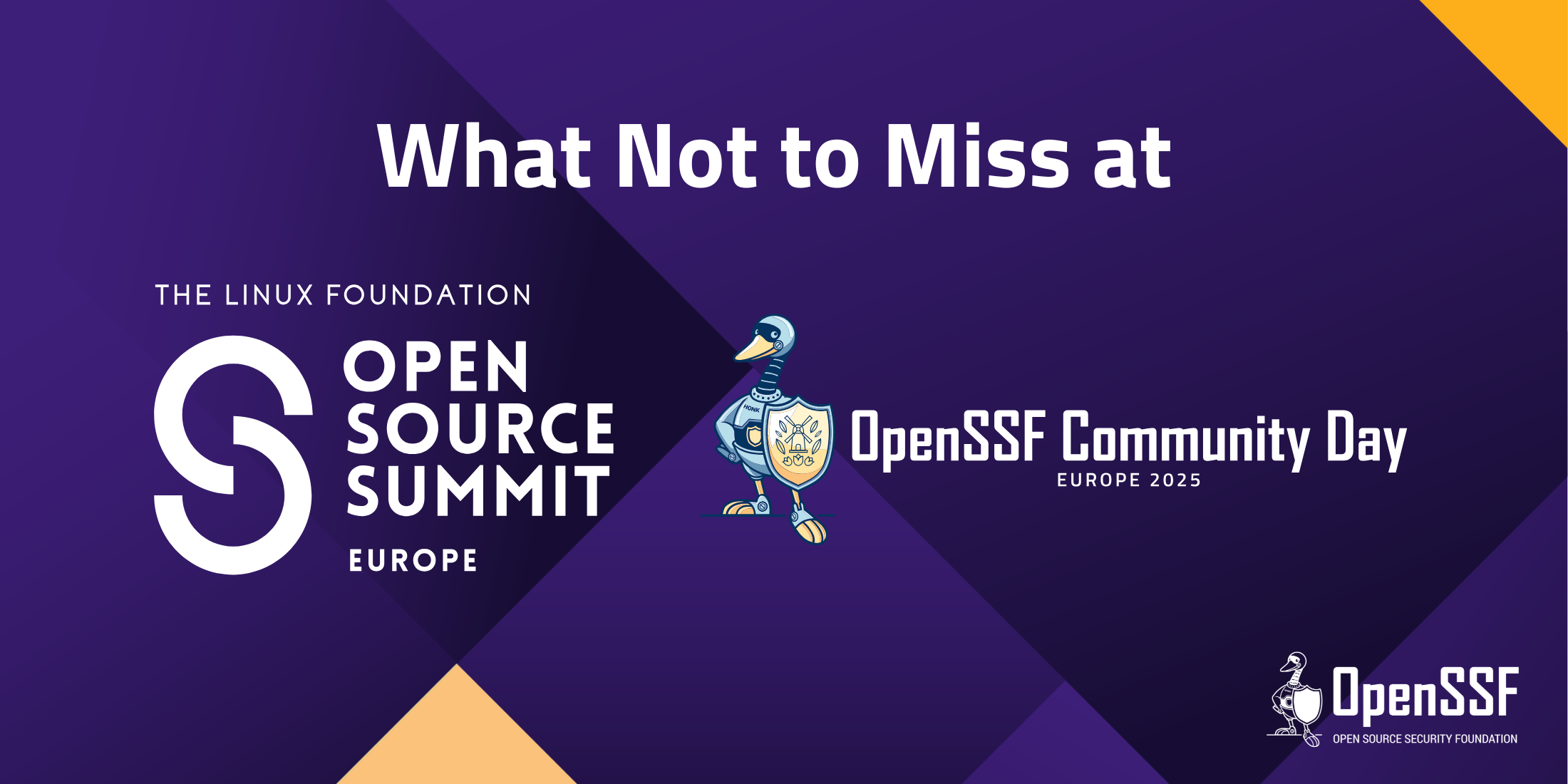
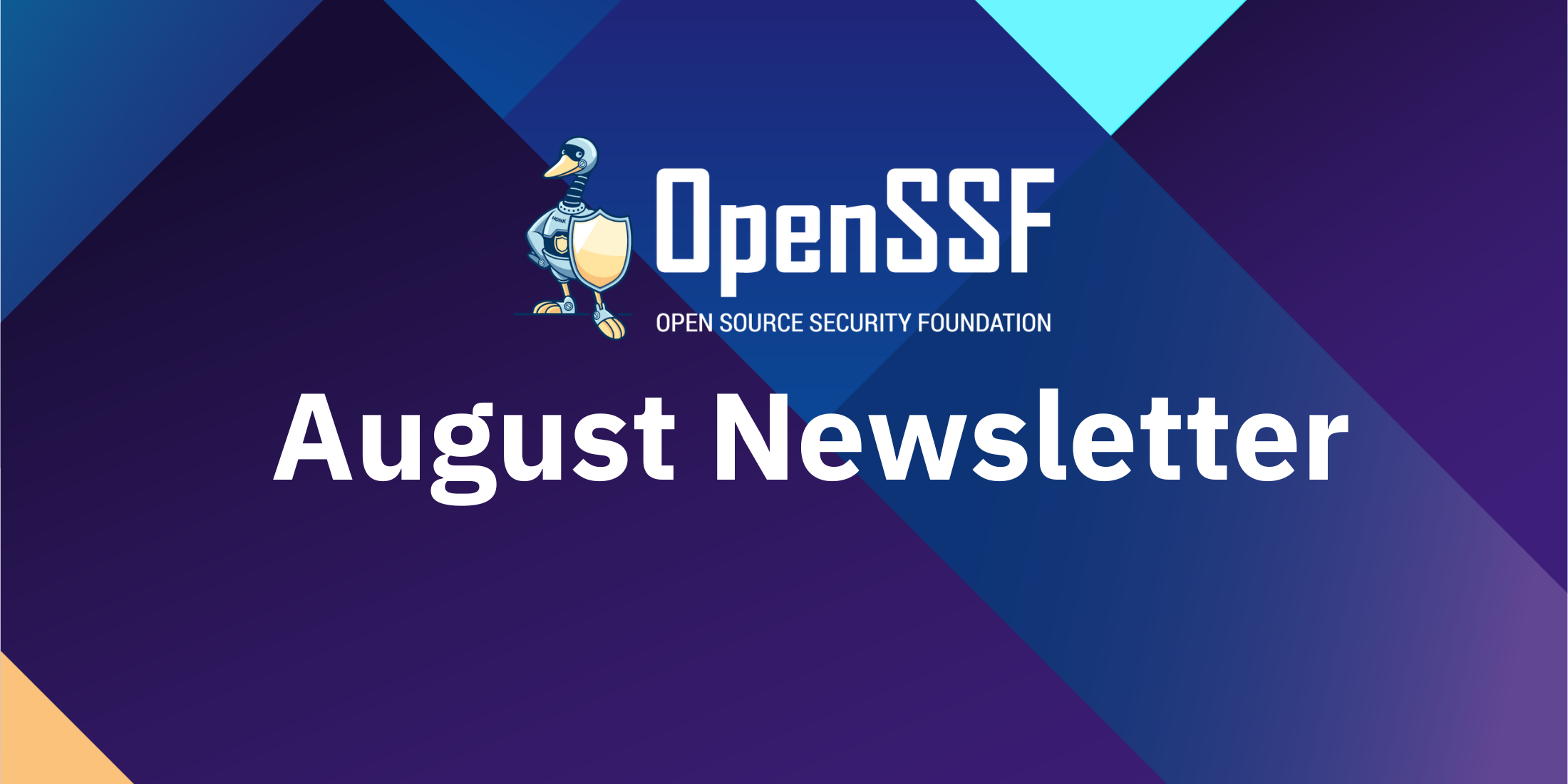
Welcome to the August 2025 edition of the OpenSSF Newsletter! Here’s a roundup of the latest developments, key events, and upcoming opportunities in the Open Source Security community.
🔍 Case Study: GUAC security validated in <1hr w/Baseline.
📝 Blogs: OpenSSF Community and Working Groups, AI security, AIxCC wins.
🎙 Podcasts: OSTIF audits, CRA in Erlang Community.
📅 Events: OpenSSF Community Day Europe, Linux Foundation Europe Member Summit, Open Source in Finance Forum New York, Linux Foundation Europe Roadshow, European Open Source Security Forum (link coming soon), OpenSSF Community Day Korea, Open Source SecurityCon 2025
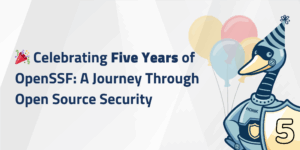
August 2025 marks five years since the official formation of the Open Source Security Foundation (OpenSSF). From uniting global efforts to securing open source software, to launching initiatives like Sigstore, OpenSSF Scorecard, Alpha-Omega, SLSA, and the OSPS Baseline, OpenSSF has moved from ideas to impact – shaping the future of software supply chain security.
This milestone isn’t just a celebration of what we have accomplished, but of the community we have built together. Here’s to five years of uniting communities, hardening the software supply chain, and driving a safer digital future.
Read the full blog to explore the journey, voices, and vision that continue to shape OpenSSF’s impact.
We want to give a shout out to Sarah Evans (Dell Technologies), Andrey Shorov (Ericsson) and the entire AI/ML Security Working Group for their outstanding contributions through OpenSSF, advancing secure AI/ML practices and delivering industry leadership in building robust AI/ML pipeline security.
Their new whitepaper, “Visualizing Secure MLOps (MLSecOps): A Practical Guide for Building Robust AI/ML Pipeline Security,” expands on Ericsson’s MLSecOps framework into a comprehensive, visual, “layer-by-layer” guide. It shows how to apply open source tools like SLSA, Sigstore, and OpenSSF Scorecard to secure the ML lifecycle offering mapped risks, security controls, reference architecture, and practical tools.
This is a must-read for anyone designing, developing, deploying, or securing AI/ML systems.
Read the whitepaper and the blog to see how OpenSSF members are shaping the future of trustworthy AI.
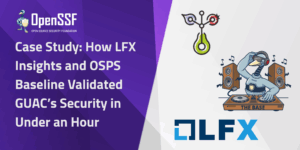
How can a project like GUAC validate its strong security posture in under an hour?
Kusari used LFX Insights integrated with the OpenSSF OSPS Baseline to run a rapid, automated assessment of GUAC’s security posture. In less than an hour, evidence of strong security practices was compiled automatically, results were presented in a clear visual format, and findings were instantly aligned to major frameworks like NIST SSDF and the EU Cyber Resilience Act. The result was faster trust, reduced workload, and a smoother path for adoption.
Project leaders and community voices including Mike Lieberman (Kusari), Ben Cotton (Kusari), Eddie Knight (Sonatype), and Mihai Maruseac (Google) emphasized the value of this approach. They highlighted how OSPS Baseline makes security proof more visible, reduces repetitive effort, saves time for maintainers, and builds confidence among OSPO leads and end users.
Read the full case study to see how LFX Insights and OSPS Baseline created a blueprint for faster, more credible security assurance.
Here you will find a snapshot of what’s new on the OpenSSF blog. For more stories, ideas, and updates, visit the blog section on our website.
As machine learning evolves, so do the threats-data poisoning, model tampering, and unverifiable origins are real risks. Google’s Open Source Security Team, sigstore, and OpenSSF created the OMS specification, integrating it into hubs like NVIDIA NGC and Kaggle. Models are automatically signed, tied to the author’s identity, verified for authenticity, and logged for a complete audit trail. This blueprint offers a path to a verified ML ecosystem.
“If we reach a state where all claims about ML systems and metadata are tamperproof, tied to identity, and verifiable by the tools ML developers already use—we can inspect the ML supply chain immediately in case of incidents.” — Mihai Maruseac, Staff Software Engineer, Google
Read the case study.
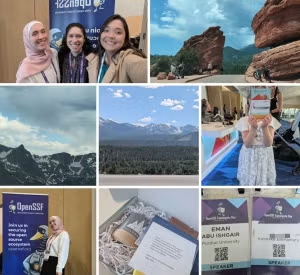
Eman Abu Ishgair shares her experience attending the Open Source Summit North America in Denver as a speaker, volunteer, and new community member during OpenSSF Community Day. From co-presenting “The Open Source SDLC Control Plane: Building the Supply Chain Security Sandwich” with Michael Lieberman, CTO and Co-founder at Kusari and Governing Board member, to volunteering at the OpenSSF booth, connecting with collaborators, attending talks on SBOM, Signing, and Securing AI pipelines, and exploring Colorado’s natural wonders with her children, Eman’s week was full of learning, community, and inspiration.
Read the full blog to experience her journey and discover how you can get involved with OpenSSF.
Ejiro Oghenekome and Sal Kimmich share how OpenSSF serves as the global hub for collaborative work on securing the software supply chain, with no gatekeepers and open participation for all. The blog explains how to join Slack, attend meetings, contribute via GitHub, and explore working groups like AI/ML Security, BEAR, Global Cyber Policy, Security Tooling, Vulnerability Disclosures, Securing Software Repositories, ORBIT, Securing Critical Projects, and Supply Chain Integrity. Every OpenSSF group welcomes newcomers, with many paths to contribute, no matter your background.
Read the blog to discover where your skills fit and how to start contributing today.
The AI wave is here, and it’s only getting bigger. It ushers in a pivotal new cybersecurity battleground: securing AI. In this blog, Hugo Huang, expert in Cloud Computing and Business Models spearheading joint innovation between Canonical and Google, shares findings from a security survey. The report highlights three top challenges in 2025-lack of standardized frameworks, shadow AI, and the talent gap. Building resilient AI systems needs concrete security measures across the AI lifecycle, with open source as the pivotal enabler.
Read the full blog.
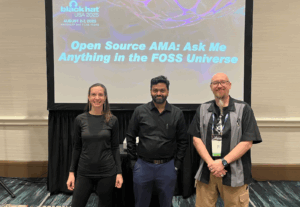
Image source: Christopher “CRob” Robinson (OpenSSF), Stephanie Domas (Canonical), and Anant Shrivastava (Cyfinoid Research) hosted a standing-room-only “Ask Me Anything About FOSS” panel at Black Hat USA 2025
The Open Source Security Foundation marked a strong presence at Black Hat USA 2025 and DEF CON 33, engaging with security leaders, showcasing initiatives, and fostering collaboration to advance open source security. At DEF CON, the spotlight was on the AI Cyber Challenge (AIxCC), a DARPA and ARPA-H competition to develop AI-enabled software that can identify and patch vulnerabilities. Trail of Bits, an OpenSSF General Member, earned second place with Buttercup, their open source Cyber Reasoning System.
Read the full blog for more details.
In this episode of What’s in the SOSS, Derek Zimmer and Amir Montezary from the Open Source Technology Improvement Fund (OSTIF) share their decade-long mission of providing security resources to open source projects. They focus on collaborative, maintainer-centric security audits that improve project security posture through expert third-party reviews. These engagements are designed to be supportive, impactful, and efficient. Listen to the full episode to hear OSTIF’s 10-year journey and how they help projects strengthen security.
In this episode of What’s in the SOSS?, CRob talks with Jonatan Männchen (CISO, Erlang Ecosystem Foundation), Ulf Riehm (Product Owner, Herrmann Ultraschall), and Michael Winser (Alpha-Omega). The conversation explores the critical importance of security in open source, especially with the CRA. Hear how the Erlang community brings in experts, fosters collaboration, and builds trust. Listen to the full episode to learn why manufacturers invest in upstream projects and how other ecosystems can follow this approach.
The Open Source Security Foundation (OpenSSF), together with Linux Foundation Education, provides a selection of free e-learning courses to help the open source community build stronger software security expertise. Learners can earn digital badges by completing offerings such as:
These are just a few of the many courses available for developers, managers, and decision-makers aiming to integrate security throughout the software development lifecycle.
Join us at OpenSSF Community Day Events in Europe and South Korea!
OpenSSF Community Days bring together security and open source experts to drive innovation in software security.
Connect with the OpenSSF Community at these key events:
There are a number of ways for individuals and organizations to participate in OpenSSF. Learn more here.
You’re invited to…
We want to get you the information you most want to see in your inbox. Missed our previous newsletters? Read here!
Have ideas or suggestions for next month’s newsletter about the OpenSSF? Let us know at marketing@openssf.org, and see you next month!
Regards,
The OpenSSF Team
